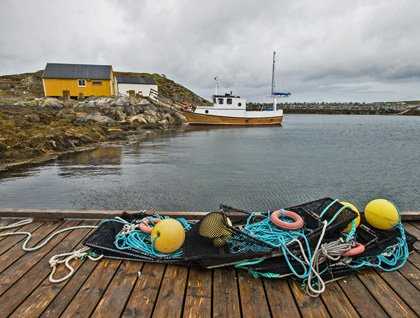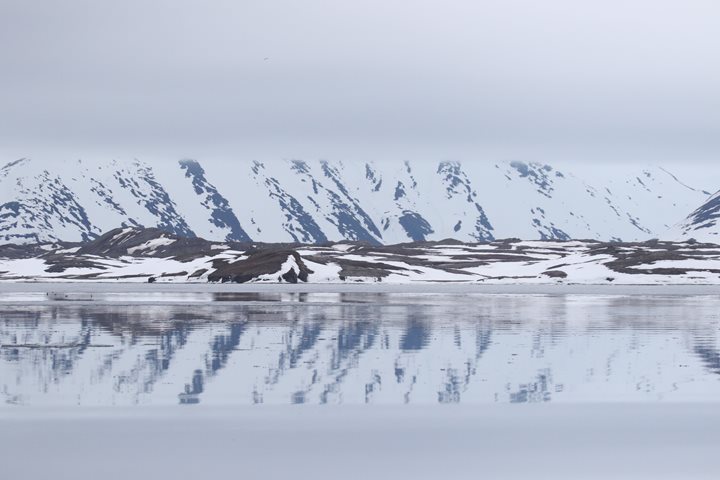Norway is a country that brings a few iconic images to mind. Skiing, fjords, trolls, and a rich fishing history with its colorful ships and boat houses. Today was our chance to take a closer look at that legacy by visiting both an active and former fishing community.
The tiny, three-square-kilometer island of Brattvaeret once housed hundreds of fisherman who took full advantage of the rich cod fishing grounds along Norway’s outer coast. Due to the expansion of the fishing industry on Smøla, its larger island neighbor, and shifts in fish stocks, the permanent community on Brattvaeret slowly waned until the last resident moved out in the 1980s. Today’s visit highlighted the architectural and historic legacy of that village via local guides who still have family ties to the site. Still frequented in the summer months by renters, the colorful, wind-battered houses look as if they were never vacated. Our stroll over the moss-lush terrain led us to the former church where a batch of fresh waffles and berries was awaiting our arrival. Also serving as a lecture hall, one of our guides laid out the past 500,000 years of Earth’s geologic history as it pertains to Smøla, Brattvaeret, and the productive fishing grounds that brought its former residents to this windswept island.
From old to new, our day was complimented by the transition from life on Brattvaeret, to the modern fishing industry that has replaced it in the town Veiholmen. Veiholmen is an active fishing community on the outer reaches of Smøla where fisherman still catch and process cod. Quaint, photogenic, but relatively quiet today due to heavy winds, this scene no doubt resembles what any number of the defunct fishing communities around Norway must have looked like in their heyday. Red and white facades lined the shore while a fleet of fishing boats both large and small duck and rolled in the wind—the same wind that greeted us on our soggy return back to the ship.
Nothing warms the soul like music and our evening was rounded off nicely by the vocals of The Gubbliners. Twelve strong, this green-clad band of Norwegians with an Irish problem stormed the lounge and belted out sea ballads about drinking, women, and getting in and out of trouble. Influenced by the Irish, this group sang in both Norwegian and English and helped reignite the coals after our authentically coastal day in Norway.







